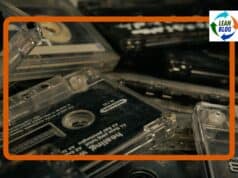Maintaining a fat-free factory floor
Here's a nice factory case study, once again in the textiles industry (just like this recent post). It's a company that is using Lean as a business strategy, to transform how they do business, to allow them to compete with Chinese imports.
From the article:
“As you lower lead times (the time between order and delivery) and do all those things, there's a couple of dynamics that happen,” said David Adair, the company's executive vice president. “You become more efficient. You create extra capacity and respond quicker. It's up to the company to find sales and generate new business based upon new capacities freed up.”
This sounds like a case of a company using Lean as a GROWTH strategy, not as a cost cutting approach. As management gets more business, that reduces the temptation to fall into the layoffs trap, which would kill enthusiasm for Lean.
It's a nice case study for a newspaper article, it touches on kaizen events (and sustaining kaizen), kanban, 5S, and smaller batch sizes. I love this example of how they didn't let their large truck be an excuse for maintaining large full-truck transfer batch sizes:
The company saved more money and time through other changes. In its pre-lean days, for example, the company would take three days to fill a 40-foot tractor trailer — leased from another business — from floor to ceiling with fabric to be transported to a Philadelphia company that would apply to them a special rubber backing. It would take several weeks in all by the time that company would be able to unload and sort the materials and the process was completed, because they had so much to do at once.
Now, in keeping with lean's emphasis on flow, Absecon Mills has bought a truck that it drives back and forth every day to Philadelphia as fabric is made, and developed a way to sort the fabric before it goes in the truck. That has reduced lead time for that part of the process to just a few days
It ends with a quote about the cultural challenges:
The hardest part, really, is changing the company's culture to reflect the lean process, Adair said. “Changing the culture of the company will take 10, 15, 20 years.”
It's not an easy quick fix, Lean. But, it's a long-term challenge worth taking on. Absecon Mills is proving that and, hopefully, will continue to do so!
Please scroll down (or click) to post a comment. Connect with me on LinkedIn.
Let’s work together to build a culture of continuous improvement and psychological safety. If you're a leader looking to create lasting change—not just projects—I help organizations:
- Engage people at all levels in sustainable improvement
- Shift from fear of mistakes to learning from them
- Apply Lean thinking in practical, people-centered ways
Interested in coaching or a keynote talk? Let’s start a conversation.









